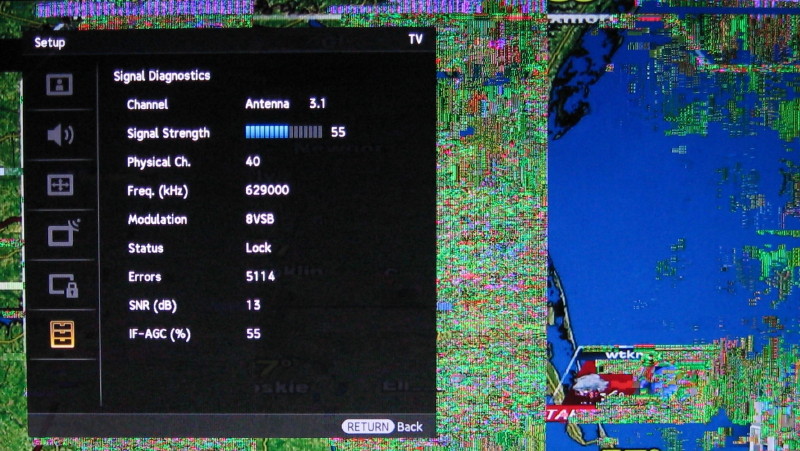You now have a feeling for the upper and lower limits for NM; here are the limits for dBm PWR:
ATSC Recommended Practice:
Receiver Performance Guidelines
Document A/74:2010, 7 April 2010
RECEIVER PERFORMANCE GUIDELINES
5.1 Sensitivity
Quote:
|
A DTV receiver should achieve a bit error rate in the transport stream of no worse than 3x10E-6 (i.e., the FCC Advisory Committee on Advanced Television Service, ACATS, Threshold of Visibility, TOV) for input RF signal levels directly to the tuner from –83 dBm to –5 dBm for both the VHF and UHF bands.
|
5.2 Multi-Signal Overload
Quote:
|
The DTV receiver should accommodate more than one undesired, high-level, NSTC or DTV signal at its input, received from transmission facilities that are in close proximity to one another. For purposes of this guideline, it should be assumed that multiple signals, each approaching –8 dBm, will exist at the input of the receiver.
|
Quote:
|
the weakest station that I can sometimes pickup is showing NM of 15 and a PWR of -75.....If I want to pickup a station that has NM of 15 and a PWR of -75.....But the PWR of -75 I am not sure how I account for that.....the -75 seems to suggest that I probably shouldn't be able to get that signal very well if at all....which would compensate to bring the -75pwr up to -60.....still not real great
|
Under ideal conditions you should be able to get that signal (WMAR?) if your antenna was outside, aimed directly at the transmitter, with nothing in the signal path, with no multipath reflections, no co-channel interference, no adjacent channel interference, no electrical interference, no spurious signals created in the tuner or preamp from partial overload from stronger signals, and the tvfool report is accurate. A NM of 15 dB is 15 dB more than the minimum required for reception. And a signal power of -75 dBm is about 10 dB more than needed by most tuners.
But your signal doesn't have a PWR of -75 dBm if the antenna is still in the attic.
All of the impediments I listed can reduce the signal quality (as defined by SNR and errors), which increases the digital errors in the signal. The FEC (Forward Error Correction) has a limited ability to correct errors. Once that limit is reached, the signal reaches the "Digital Cliff" where you have pixilation, picture freeze, and finally dropout.
If you are going to continue to do antenna experiments, you really need a way to measure signal strength and signal quality. My first way to do that was with an Apex DT502 converter box that has dual signal bars, one for signal quality and one for signal strength. Cost: a coupon and $10.

I now use the Diagnostics Screen of my Sony KDL22L5000. Calibration chart in attachment 5.
Bad signal, picture freeze, SNR less than 15 dB and errors:

Good signal:.

My latest Sony, a KDL32R400A, has a much wider range signal strength scale, which is very useful for antenna experiments. See attachment 6.
Some people use a USB tuner, but the software isn't user friendly for me:
